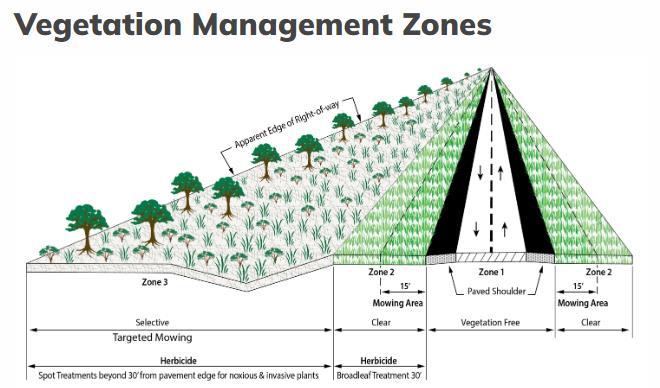June 2023
INDOT actively participates in several practices throughout the year to maintain Indiana's pollinators, and these activities come to light especially during Pollinator Week.
Each year, the national nonprofit organization Pollinator Partnership sets aside a week to appreciate the work of pollinating organisms that are the foundation of flowering meadows and productive agricultural fields. These underappreciated organisms, ranging from insects to vertebrate animals, carry pollen between flowers and help promote a healthy environment. Some species you may know, like the honeybee and butterfly, while others may come as a surprise, like bats. Bats typically live in caves, trees, and even under INDOT’s bridges throughout the year, but most other pollinators thrive in flowering fields in open meadows or near roads. These pollinator habitats provide food and nesting areas for pollinators to live and help spread pollen.
Thanks to this hard work, agricultural crops are more resistant to disease and more productive. Up to 35% of global crop production is possible directly because of pollinators. As the human population expands, the need for pollinators exponentially increases both for food production and water quality since their grassland habitats help filter runoff and groundwater. This makes it increasingly important to appreciate and protect pollinators, which is what pollinator week is all about!
Along more than 60,000 acres of INDOT-owned medians and roadsides, we adhere to the best maintenance practices for vegetation management zones (see below). As vehicle safety is the highest priority, zone 1 is cleared of vegetation, and zone 2 is free of tall woody vegetation and broadleaf weeds. Zone 3, however, is kept free of only noxious species, invasive species, and tall trees, promoting healthy and native vegetation for pollinators while also reducing taxpayer costs associated with maintenance. INDOT also requires mitigation for its construction projects that involve tree removal 100-300 feet from a roadway and projects with tree removal in documented Indiana bat habitat, with the preferred method of mitigation being habitat restoration adjacent to the site.
Pollinator Week may be celebrated on an individual scale, as well. Pollinator habitats can be established in your own yard! Be sure to incorporate flowers that bloom at differing rates so the pollinators always have access to blooming plants. The Native Plant Finder enables you to find native plants according to your ZIP code and can reveal which pollinators utilize these plants. It is also important to protect any native pollinator breeding sites on your lawn when possible, which could include logs, stumps, nests, or thick vegetation.
Though this week may be Pollinator Week, it is critical to protect pollinators all the time. Indiana has 430 bee species, 144 butterfly species, more than 2,000 moth species, and many other pollinator species that rely on healthy, native vegetation. Without pollinators, our plants would suffer a loss of genetic diversity and fruit and seed production, including agricultural crops. So, if you get the chance this week, see what you can do to help our pollinators thrive.
INDOT Holds Inaugural Bioblitz
A Bioblitz is an event that focuses on finding and identifying as many species as possible in a specific area in a short period of time.
Eleven INDOT Ecology and Waterway Permitting Office (EWPO) employees partnered with 16 experts from the Indiana Department of Natural Resources, Indianapolis Zoo, state universities, and others at the inaugural INDOT Bioblitz. They spent a day in mid-May gauging biodiversity at the Waverly Bog, which is an INDOT mitigation site for the I-69 Finish Line project in Morgan County to gain a better understanding of the bog’s flora and fauna.
The preliminary findings included 153 species of plants, 75 species of birds, 12 species each of butterflies and mammals, 10 species of amphibians and reptiles, five species of fish, and three species each of crawfish and fungus.
INDOT’s EWPO group plans to make a presentation on the Bioblitz findings at next year’s Indiana Academy of Science Conference.


